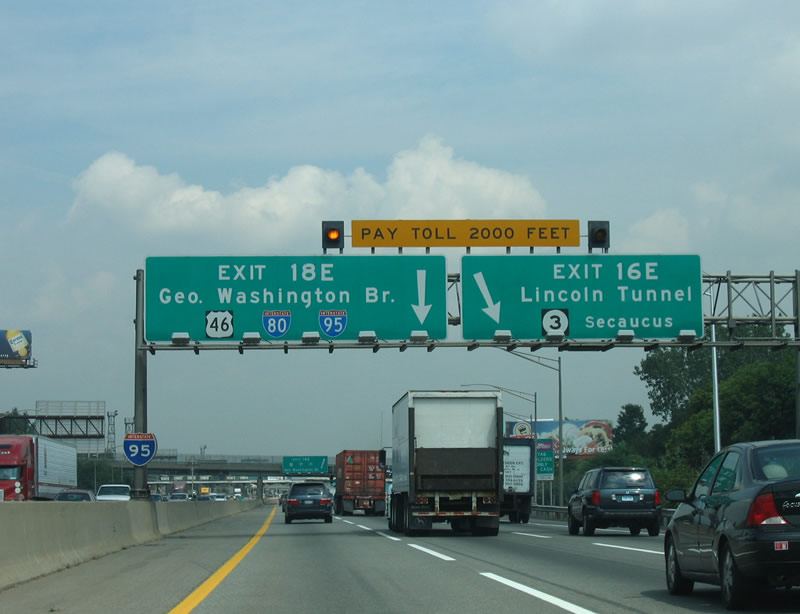Hit the road…
Before there was an information superhighway, there was a cement superhighway.
The analogies between the Internet and the Interstate are quite interesting.
- Both were built by the Department of Defense. One to move missiles, the other to protect command and control
- Both were networks
- Both led to vast changes in the nation, both economically and demographically
The Interstate Highway System was built during the Eisenhower administration as a way of moving truck based ICBMs around the country. But its construction also had a seminal impact on the economics and the demographics of the United States.
The Interstate allowed for the rapid transportation of goods, but also of people. And as people and automobiles began to move with greater ease, those who could see and understand the impact of this newly inexpensive mobility also began to see new and very different business opportunities buried in the concrete.
The New York Times today carries an article about Obama and Levittown, Pa. Levittown was entirely a product of the Interstate System. Bill Levitt, back from his stint building fast and cheap housing for the Navy Seabees during WW2 understood that the Interstate would open vast tracts of hitherto desolate farmland to the major ciites. Thus, in a stroke the notion of Suburbia was born.
Holiday Inns, McDonald’s, Shell Service Stations, Taco Bell – a whole world grew up to service those who began to travel the Interstate. There is a common denominator amongst those businesses that were a byproduct of the Interstate system: cheap, simple and uniform.
Prior to the Interstate Revolution, a Grand Hotel might indeed be a Grand Hotel, but they were expensive and unique. The Ritz, The Plaza… Each one complex but beautiful. After the Interstate Revolution, Holiday Inns. Each one pretty much the same as the next, on and on and on. Cheap, functional, utilitarian.
Prior to the Interstate Revolution, if you wanted to build a house, you did it one at a time. It was expensive and complex, and it took a long time, but if you did it right, it lasted for generations. Quality. After the IR (Interstate Revolution), Bill Levitt showed us how to build houses fast, cheap, simple and in great quantities, But, like the Holiday Inns, pretty much all the same.
Prior to the IR, you might open a restaurant. It could be grand or a cafe, but it was essentially a one-off. After the IR we got McDonalds or Wendys or Burger King. All essentially the same and like Levittown or Holiday Inns, all utilitarian, simple, cheap and dependable.
What the Interstate was to the 1950s, the Internet is to our own era. A vast sprawling network for moving information and products around quickly and efficiently.
And as the Interstate gave birth to a whole new way of doing business, so too has the Internet given birth (and will continue to do so) to a whole new way of doing business – and whole new businesses. What, after all, is Amazon.com but a kind of McDonaldization of the book selling business, minus the buildings, for the web.
Now, let’s look at the long suffering New York Times. It is, in a very real sense, the Grand Hotel of journalism. Beautiful, expensive, with ornate marble lobbies and well coiffured staff. It’s beautiful, but essentially a family owned and run one-off.
We treat journalism today like a fine restaurant – each dish made by hand from the beginning to the end. Tasty, lovely but also expensive.
And it’s fine to have a Plaza Hotel, but it does not fit very well with the Interstate sytem. It is the product of an earlier more refined and placid era. Like a finely crafted home built for one person.
Perhaps as the Interstate system begat a whole new way or thinking about what a hotel might be, or a restaurant, or a house, so now the web should get us thinking about an entirely different way to build news organizations. Instead of trying to replicate the Ritz Carlton at every exit on the New Jersey Turnpike and wondering why they are going broke, perhaps instead of plugging the old models into the new world, we should look at the distribution system first and build up based upon how that works.
That, after all, is what Levitt did.
A commodity based news and information system: fast, simple, formatted, endlessly repeatable and very inexpensive yet highly dependable. Something you can get anywhere, any time, that is fundamentally the same, that is fast.
Fast food.
Fast news.

4 Comments
Shep Hayes November 11, 2008
Well if the New York times is a Grand Plazza Hotel, then does that make USA Today the Holiday Inn? Cheap, basic, and not something you want to spend too much time at?
rosenblumtv November 11, 2008
THAT was funny!
pencilgod November 11, 2008
Have a look at this and tell me nobody cares about quality.
http://www.theonion.com/content/video/youtube_contest_challenges_users
pencilgod November 10, 2008
I think you are elevating the NYT too high in your analogy. To me their product is still more Fuddruckers in a world of MacD’s than a fine dining restaurant.
What you propose is taking them on with a sausage stall on every corner. They may be cheap and everywhere. The sausages may smell nice but a few bouts of food poisoning from the little packets of salmonella and people will think twice.
The problem is still how much will people pay for roadside sausage when the local garden centre has them free or a gold coin donation to charity?